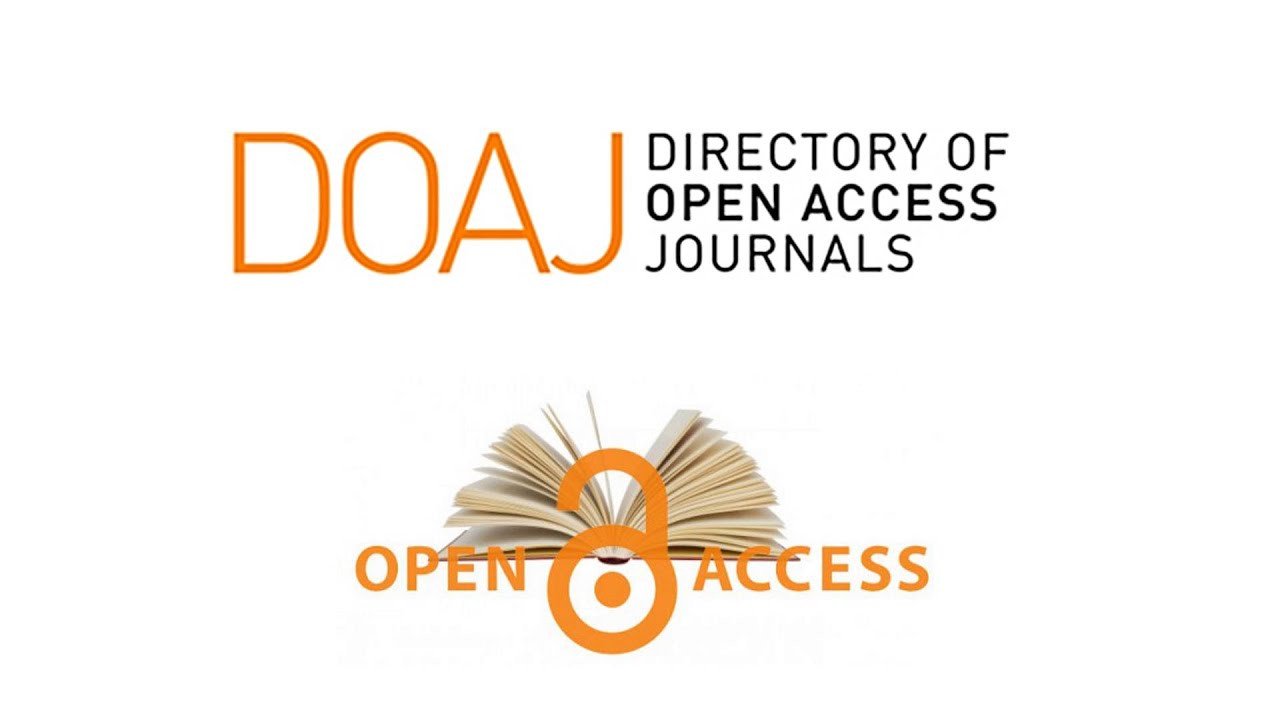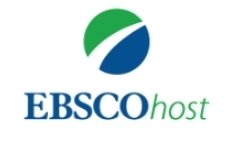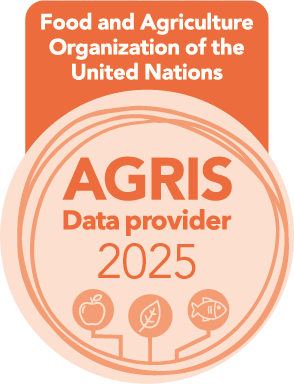Effect of some environmental factors on the occurrence and distribution of Polychaeta Namalycastis indica (Southern, 1921) in the intertidal region of Shatt Al-Arab River Basrah Iraq
DOI:
https://doi.org/10.58629/ijaq.v18i2.349Keywords:
environmental factors, Shatt al-Arab, Polychaeta, tidal zoneAbstract
The current study was conducted on N. indica in three stations for the period from December 2017 to November 2018 (Al-Sharsh, Al-Salhiya and Al-Dweab), as samples were collected monthly. Some environmental factors were calculated, such as water temperature. The lowest water temperature was 12 °C during January and the highest temperature was 33 °C during July, both in Al-Salhiya station. The lowest value of salinity was 0.5‰ reached in April and November in Al-Sharsh station, while reached highest value ‰ 39.3 were recorded during July for Al-Dweab station, the light transmittance values ranged between (63-18) cm, recorded during July and November for Al-Salhiya and Al-Sharsh stations, respectively. As for the values of dissolved oxygen, it ranged between (12.1-5.1) mg/liter during August and May in the two stations. Al- Salhiya and Al-Sharsh, respectively. As for the bottom sediments of all the stations, they were alluvial with few and different percentages of sand and clay. The study showed that the studied environmental factors have an impact on the distribution and spread of this species within the horizontal and vertical sections in the tidal zone. The total density and density were measured within the horizontal distribution pattern in each station and the monthly total density ranges were 592-32 individuals/m2. The density of the three species was calculated within the horizontal distribution after dividing the area into three sections for each station. The results of the study indicated that there were significant differences at the level of P<0.05 for densities between the first and second different sections of N. indica, and there were significant differences between the first and third sections and between the second and third sections.Metrics
References
Abdul Hassan, J.K. (2008). Al-Najebia power station plant effleuents and its impact on physic-chemical characteristics of Garmat Ali canal-marina Mesopotamica, 23(2):287-304. DOI:10.13140/RG.2.2.-13915.36648.
Abowei, J.F.N. (2010). Salinty, dissolved oxygen, PH and Surface water temperature condition in Nkoro river. Niger delta. Nigeria advance. J. Food Sci. Technol., 2(1):36-40. URL
Al-Abbad, Y.; Al-Mayah, S.H. and Abdul-Ridha, N.H.W. (2015). Seasonal variation of ringworms and some large benthic invertebrates with a new record of the species Naidinae) Stephenson, 1941 (Oligochaeta: Naisraviensis from the north of Basra governorate. Basrah Res. J. (Al-Olayyat), 41(1): 64-85. URL
Al- Baghdadi, N.M.; Sultan, E.N. and Abdullah, A. M. (2020). The Effect of some environmental factors on the density and distribution of isopod Sphaeroma annandalei annandalei along the intertidal zone of the Shatt AL-Arab river. Iraq. Plant Arch., 20(1). 84-92. URL
Ali, M.H. and Ahmed, H.K. (2004). Energy Values of Aquatic microbenthic invertebrates from Shatt AL-Arab river. Iraqi J. Aquacult.,1(1)54-58. URL
Ali, M.H. and Mohammed, H.H. (2004). The effect of cutting off on the specific respiration in the Namalycastis indica. Iraqi J. Aquacult., 1(1): 28-33. URL
Al-Hejuje, M.M. (2014). Application of water quality and pollution indices to evaluate the water and sediments status of the Middle part of Shatt Al-Arab river. Ph. D. Thesis, Coll. Sci. Univ. Basrah, 240 pp. URL
Al-Judu, N; Abdul W. (1990). Study of sexual maturation and growth of two species of polychaete annelids, Namalycastis indica and Dendronereides heteropoda in Shatt Al-Arab. M. Sc. Thesis, Coll. Educ. Univ. Basrah, 137 pp. DOI:10.5962/p.320165.
Al-Hammadi, N.S. (2017). A comparative ecological study of two types of invertebrates: Amphibalanus amphitrite (Darwin, 1854) and the ringworm Namalycastis indica (Southern, 1921) in two stations in Shatt Al-Arab. M. Sc. Thesis, Coll. Agric. Univ. Basrah, 114 pp.
Al-Rudaini, A.M.J. (2010). Environment, nature and structure of the fish community in Radwaniyah Lake, west of Baghdad. Iraqi J. Agricult., 15(1): 106-96. URL
Al-Saadi, H.A. (2006). Fundamental of ecology. First printing, Dar Al-Bazordi for printing and publishing, Amman-Jordan: 411pp.
Andries, T.M. (2005). Food intake, growth, and reproduction as affected by day length and food availability in the pond snail Lymnaea stagnalis Amer. Malas. Bull., 23: 113-120. DOI: 10.4003/0740-2783-23.1.113
Ansotegui, A.; Trigueros, J.M. and Orive, E. (2001). The use of pigment signatures to assess phytoplankton assemblage structure in estuarine coast. Shelf. Sci., 52: 689-703. DOI:10.1006/ecss.-2001.0785.
Bazairi, H.; Bayed, A.; Glemarec, M. and Hily, C. (2003). Spatial organization of macrozoobenthic communities in response to environmental factors in a coastal lagoon of the NW African coast Merja Zerga, Morocco. Oceanol. Acta., 26: 457-471. DOI: 10.1016/ S0399-1784(03)00041-0
Buffagni A. and Comin E. (2000). Secondary production of benthic communities at the habitat scale as a tool to assess ecological integrity in mountain streams. Hydrobiologia 422/423: 183–195. DOI:10.1023/A%3A1017015326808
Callisto, M.; Goulart, M.; Barbosa, F.A.R. and Rocha, O. (2005). Biodiversity assessment of benthic Macroinvertebrates along a reservoir cascade in the lower Sao Francisco River (northeastern Brazil). Barz. J. Biol., 65(2): 141-149. DOI: 10.1590/s1519-69842005000-200006.
Downing, J.A. and Cvr, H. (1985). Quantitative estimation of epiphytic invertebrate populations. Can. J. Fish. Aquat. Sci., 42: 1570-1579. DOI:10.1139/f85-197.
Durmishi, B.H.; Ismaili, M.; Shabani, A.; Jusufi, S.; Fejzuli, X.; Kostovska, M. and Abduli, S. (2008). The physical, physical-chemical and chemical parameters determination of river water Shkumbini (Pena) (part A). BALWOIS-Oherd, Republic of Macedonia, 27-31. DOI:10.13140/RG.2.1.1533.6801
El-Enany, H.R. (2004). Ecological and biological studies lake El- Manzalah with special reference to their water quality and sediment productivity. M.Sc. Thesis, Fac. Sci., Al-Azhar Univ., 386 pp.
Gilbert, P.M.; Landsberg, J.H.; Evans, J.J.; AL-Sarawi, M.A.; Faraj, M.; AL-JArallah, M.A; Haywood, A.; Ibrahem, S.; Klesius, P.; Powell,C. and Shoemaker, T. (2002). A fish kill of massive proportion in Kuwiat bay, Arabian Gulf, 2001: The role of bacterial disease, harmful algae and eutrophication. Harmful Algae, 1: 215-231. DOI: 10.1016/S1568-9883(02)00013-6
Girgi, S.; Kazanci, N. and Dugel, M. (2003). Ordination and classification of macroinvertebrates and environmental data of a stream in Turkey. Water Sci. Technol., 47(7-8): 133-9 DOI: 10.2166/wst.-2003.0681.
Gray, J.S. and Elliott, M. (2009). Ecology of Marine Sediments: Science to Management. Second Edition. Oxf. Univ. Press, Oxford, 240 pp. DOI:10.1093/oso/9780198569015.001.0001
Hammadi, N.S. (2010). An ecological study of the Rotifera of Shatt Al-Arab region. Ph. D. Thesis Coll. Agric. Basrah Univ., Iraq. 351 pp. URL
Hassan, A.A., Dawood, A.S., and AL-Mansori, N.J. (2018). Assessment of water quality of Shatt Al-Basrah Canal using water pollution Index. Int. J. Eng. Techno., 7(4.19): 757-762. DOI:10.14419/-ijet.v7i4.19.27994.
Hassan, W.F.; Karim, S.M.; Khassaf, D.K. and Aliwi, Y. J. (2011) Quality of Irrigation Water in Al-Faw District, Basra Governorate/ Iraq. Basrah Res. J., 37(1): 41-33.
Hussain, N.A. and Grabe, S.A. (2009). A review of the water quality of the mesopotamian (Southern Iraq) marshes prior to the massive desiccation of the early 1990s. Marsh Bull. 4(2): 98-120. URL
Hussein, S.A. and Fahad, K.K. (2008). Seasonal variations in nutrients and chlorophyll concentrations in Al-Garaf canal, one of the main branches to Euphrates 1st Sci. Conf. Agric. Coll., 25-27. URL
Ishaq, F. and Khan, A. (2013). Diversity Pattern of Macrozoobenthos and their Relation with Qualitative Characteristics of River Yamuna in Doon Valley Uttarakh and American-Eurasian., J. Toxicol. Sci., 5(1):20-29. URL
Khalaf, R.Z. (2016). Study of large benthic invertebrate communities in three different aquatic environments in southern Iraq. Ph. D. Thesis. Univ. Basrah. 243 pp.
Krebs, C. J. (1972). Ecology. The Experimental Analysis of Distribution and Abundance. Harper and Row Publ., New York.,694pp. URL Larnier, K.; Roux, H.; Dartus, D. and Groze, O. (2010). Water temperature modeling in the Garonne River (France). Knowl. Managet. Aqua. Ecos., 398:4. DOI:10.1051/kmae/2010031
Linares, M.S.; Faccioli, G.G. and Freitas, L.M. (2013). Benthic macroin-vertebrate community structure and seasonal variation in a neotropical stream in the State of Alagoas, Brazil. Biota Neotrop., 13(3): 50-54. DOI:10.1590/S16760603201300030006.
Lind, O.T. (1979). Handbook of common method in limnology. 2nded. The C.V. Mosby Co., ST. Louis., 199 pp. URL
Magesh, M.; Kvist, S. and Glasby, C. J.(2012). Description and phylogeny of Namalycastis jaya sp. n. (Polychaeta, Nereididae, Namanereidinae) from the southwest coast of India. Zoo. Keys, 238: 31–43. URL
Moyel, M.S. (2010). Evaluation of the water quality of the northern part of the Shatt al-Arab River using the Water Quality Index (Canadian Model). M.Sc. Thesis. 100 pp. URL
Moyel, M.S. (2014). Assessment of water quality of the Shatt Al-Arab River, using multivariate statistical technique. Mesopotomia Environ. J. 1(1): 39-46. URL
Muir A, and Maruf Hossain Md. M. (2014). The intertidal polychaete (Annelida) fauna of the Sitakunda coast (Chittagong, Bangladesh), with notes on the Capitellidae, Glyceridae, umbrineridae, Nephtyidae, Nereididae and Phyllodocidae of the “Northern Bay of Bengal Ecoregion”. ZooKeys, 419: 1–27. DOI:10.3897/zookeys .419.7557.
Nielsen, D. L.; Brock, M. A.; Rees. G. N. and Baldwin, D. S. (2003). Effect of increasing salinity on freshwater ecosystems in Australia. Australian J. of Botany, 51: 655- 665.Nielsen, D. L.; Brock, M. A.; Rees. G.N. and Baldwin, D.S. (2003). Effect of increasing salinity on freshwater ecosystems in Australia. Australian J. of Botany, 51: 655- 665. DOI: 10.1071/BT02115.
Rahma, Jassim Hamid (1989). An ecological study of two species of polychaeta annelids, Namalycastis indica and Dendronereides heteropoda, in the Shatt Al-Arab. M. Sc. Thesis, Coll. Educ. Univ. Basrah, 87 pp. DOI:10.1016/j.dsr.2019.06.004
Saheem, N. (2011). Polychaeta Organism Density in Na Thap Estuary. Int. J. Biol., 3(4): 30-35. DOI: 10.5539/ijb.v3n4p30
Sharma, C. and Rawat, J.S. (2009). Montoring of aquatic macro-inverteb-rates as bioindicator for assessing the health of wetlands, A case study in the central Himalayas, India, J. Ecol. Indica. (9):118-128. DOI: 10.1016/j.ecolind.2008.02.004
Sharma, S.; Dubey, S.; Chaurasia, R. and Dave, V. (2013). Macroinvertebrate community diversity in relation to water quality status of Kunda river(M.P.), India. J. Disco., 3(9):40-46. URL
Silva, G.; Costa, J. L.; de Almeida, P.R. and Costa, M.J. (2006). Structure and dynamics of a benthic invertebrate community in an intertidal area of the Tagus estuary, Western Portugal: asix year ataseries. Hydrobiologia, 555:115-128. URL
Stirling, H. P. (1985). Chemical and biological methods of water analysis for aquaculture a list Sterling Univ. Scotland, 199 pp.
Sultan, I.N.; Abd, J.M. and Ahmed, N.S. (2017). Population biology of Namalycastis indica (southern, 1921) in two habitats in the Shatt al-Arab. Basra Res. J. (Al-Oumayat), 43(2): 1817-2695. URL
Usepa (United States Environmental Protection Agency) (2005). Causes of acid rain. United States Environmental protection Agency (Usepa), Updates 30 September 2003. Accessed 31 March. URL
Yang, H.; Shen, Z.; Zhang, J. and Wang, W. (2007). Water quality characteristic along the course of Huangpu River (china). J. Environ. Sci., 19: 1193-1198. DOI:10.1016/s1001-0742(07)60195-8
Yildiz, S. and Balik, S. (2006). The Oligochaeta (Annelida) fauna of Topcam Dam-Lake (Aydin, Turkey). Turk. J. Zool., 30: 83–89. URL
Zilli, F.L.; Montalto, L. and Marchese M.R. (2008). Benthic invertebrate assemblages and functional feeding groups in the Parana´ River floodplain (Argentina) Limnologica 38: 159–171. DOI: 10.1016/j-.limno.2008.01.001.
Downloads
Published
How to Cite
Issue
Section
License
Copyright (c) 2021 Iraqi Journal of Aquaculture

This work is licensed under a Creative Commons Attribution 4.0 International License.










